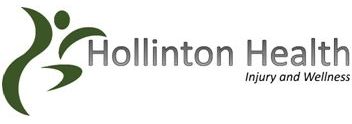Laser Therapy
LLLT (Low Level Laser Therapy) or Photobiomodulation Therapy which is the best technical term, is the application of red and near infra-red light over injuries or lesions to improve wound and soft tissue healing, reduce inflammation and give relief for both acute and chronic pain. First developed in 1967, it is now commonly referred to as LLLT.
LLLT is used to: increase the speed, quality and tensile strength of tissue repair; resolve inflammation and relieve pain (analgesia).
The red and near infrared light (600nm-1000nm) commonly used in LLLT can be produced by laser or high intensity LEDs. The intensity of LLLT lasers and LED's is not high like a surgical laser. There is no heating effect.
The effects of LLLT are photochemical (like photosynthesis in plants). When the correct intensity and treatment times are used, red and near infrared light reduces oxidative stress and increases ATP. This improves cell metabolism and reduce inflammation. These effects can be enhanced with pulses however when analgesia is required there is a second mechanism which works best when a strong continuous beam is applied.
LLLT devices are typically delivering 10mW - 500mW (0.01 -> 0.01 Watts). The power density typically ranges from 0.005W/Cm² -> 5 W/Cm².
LLLT is popularly used for soft tissue injuries, joint conditions, neuropathic pain, non-healing leg and pressure ulcers.
LLLT is used to: increase the speed, quality and tensile strength of tissue repair; resolve inflammation and relieve pain (analgesia).
The red and near infrared light (600nm-1000nm) commonly used in LLLT can be produced by laser or high intensity LEDs. The intensity of LLLT lasers and LED's is not high like a surgical laser. There is no heating effect.
The effects of LLLT are photochemical (like photosynthesis in plants). When the correct intensity and treatment times are used, red and near infrared light reduces oxidative stress and increases ATP. This improves cell metabolism and reduce inflammation. These effects can be enhanced with pulses however when analgesia is required there is a second mechanism which works best when a strong continuous beam is applied.
LLLT devices are typically delivering 10mW - 500mW (0.01 -> 0.01 Watts). The power density typically ranges from 0.005W/Cm² -> 5 W/Cm².
LLLT is popularly used for soft tissue injuries, joint conditions, neuropathic pain, non-healing leg and pressure ulcers.

Sports Therapy 4U Ltd
Injury Rehabilitation Clinic23 Whitehorse Street, Baldock,
Hertfordshire SG7 6QB
07521 150 102
info@sportstherapy4u.co.uk
